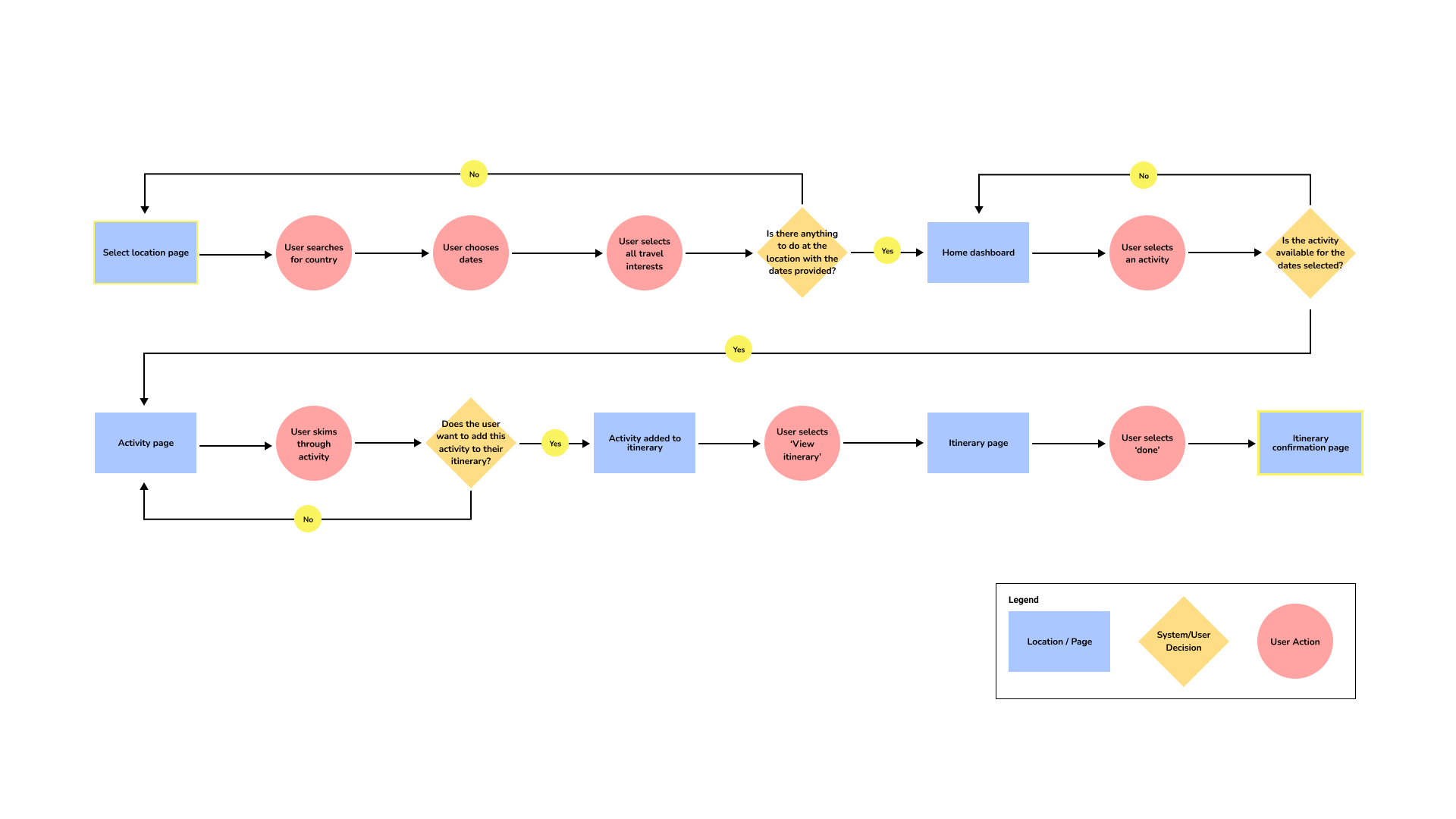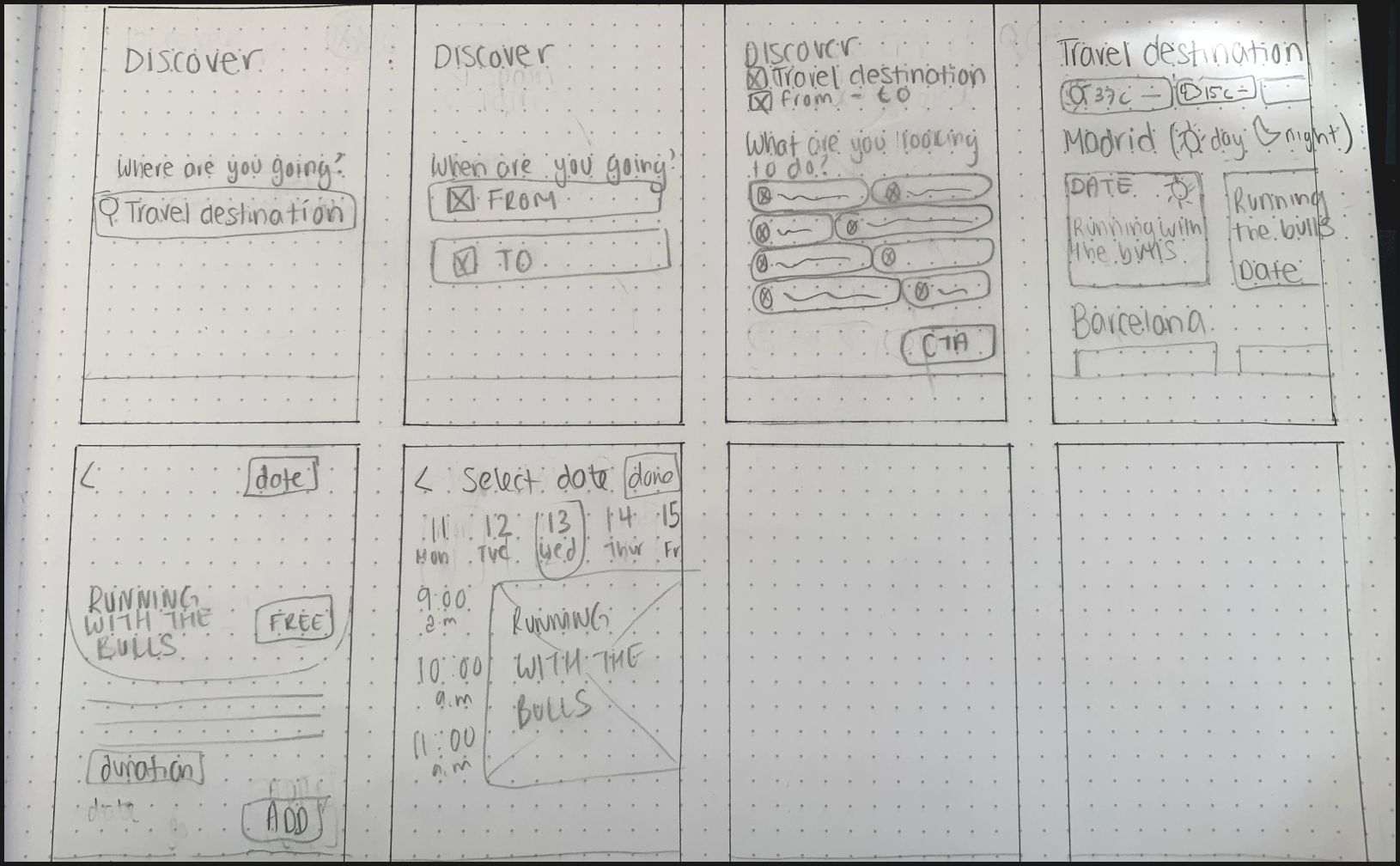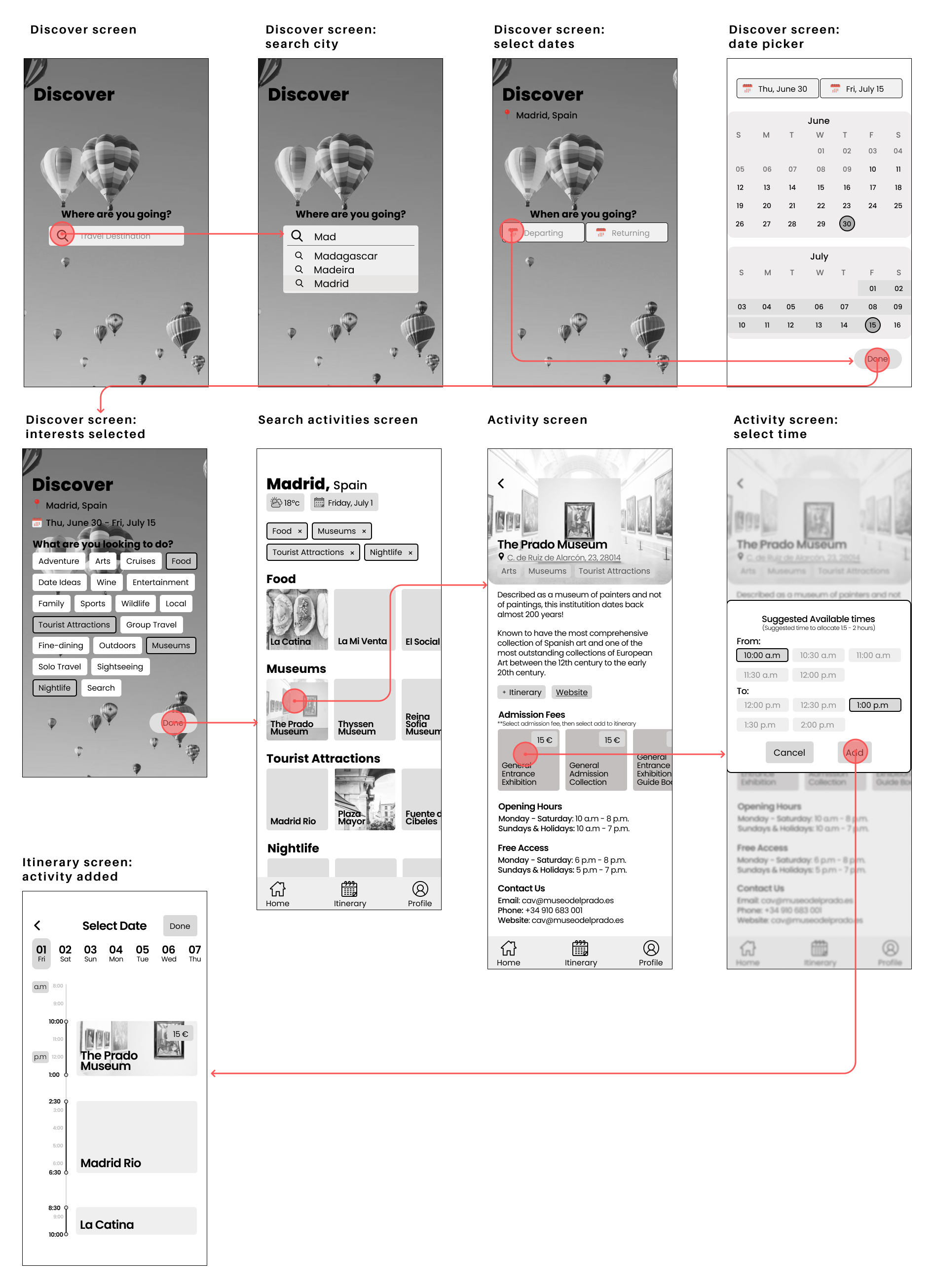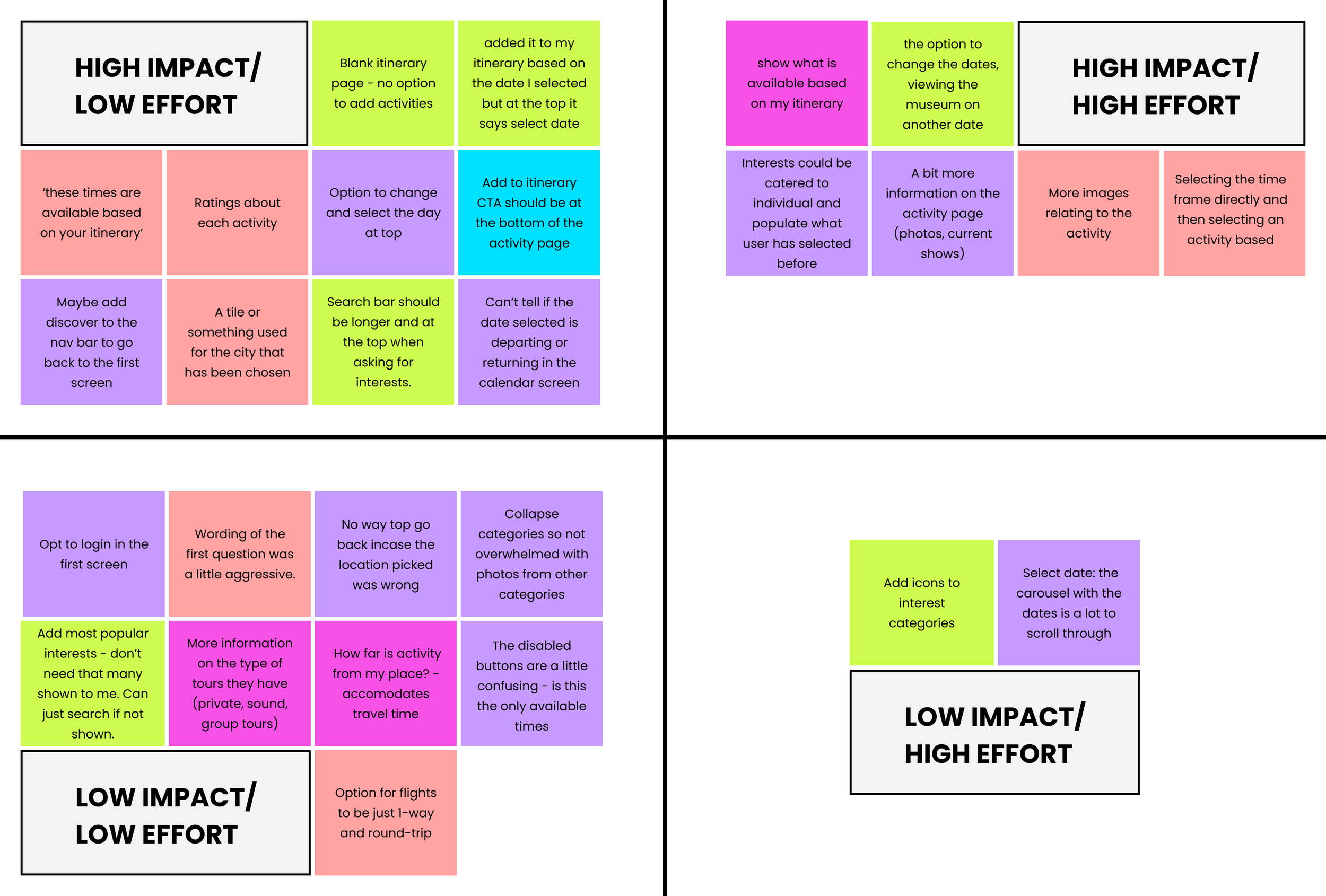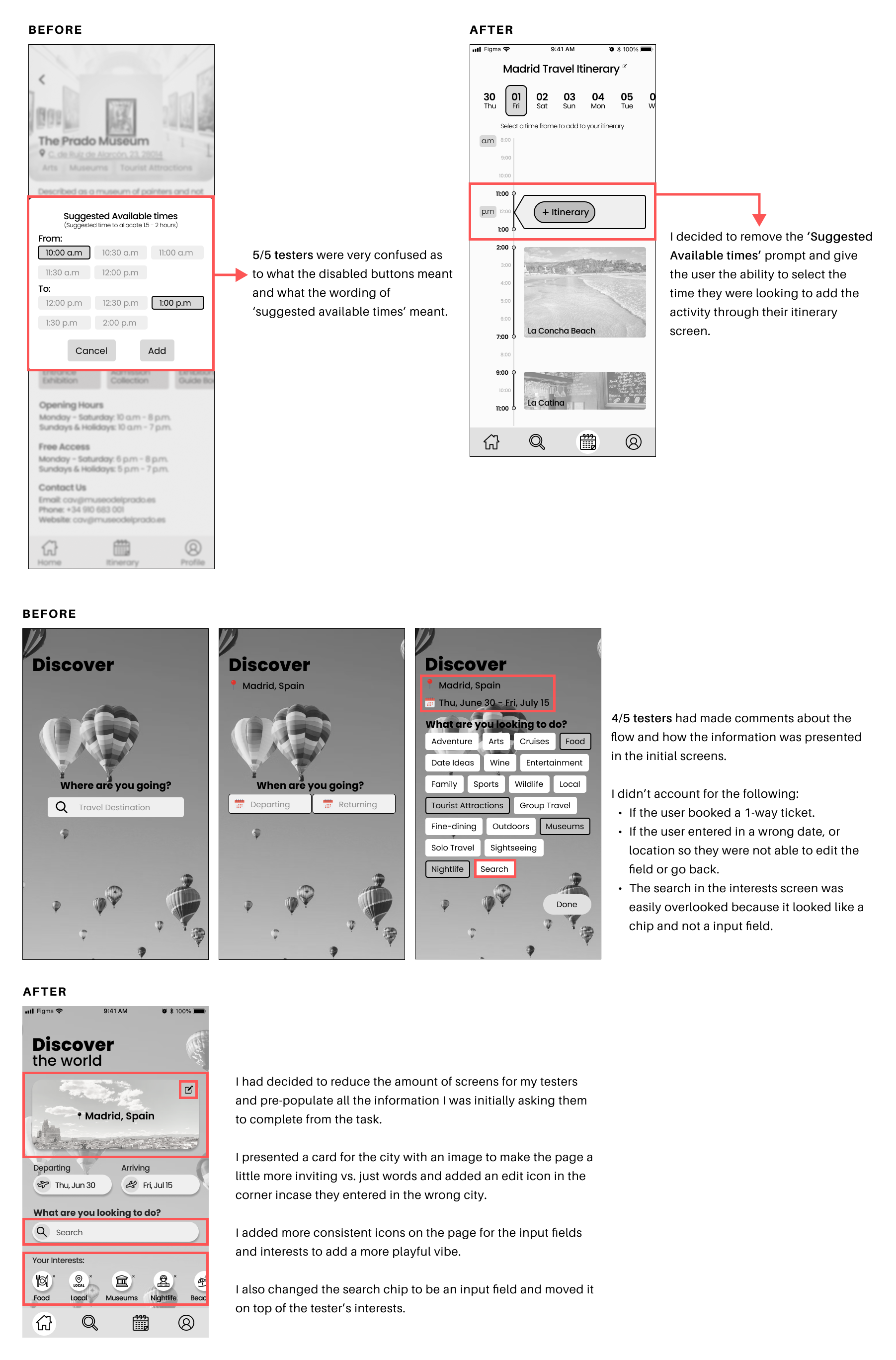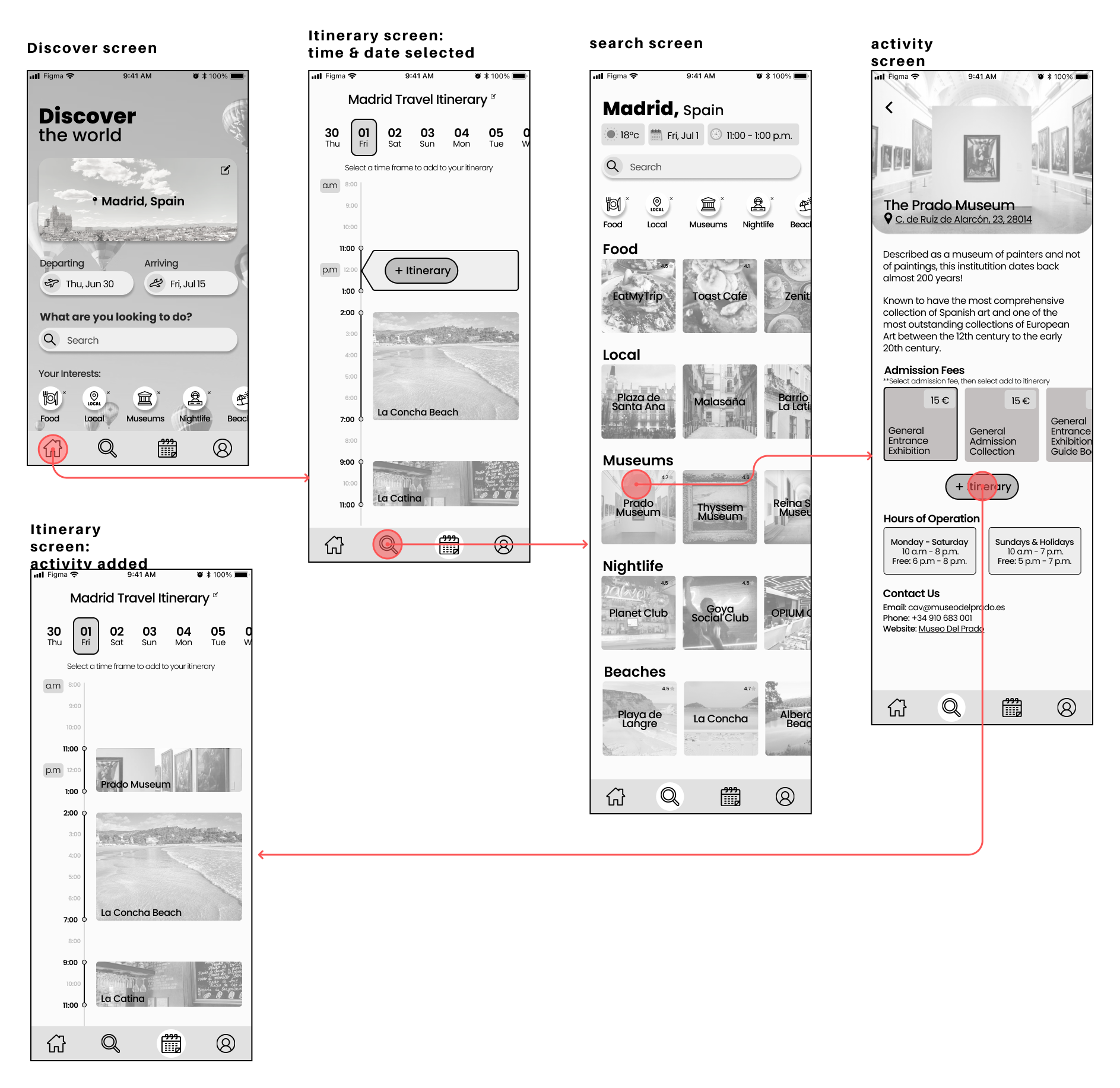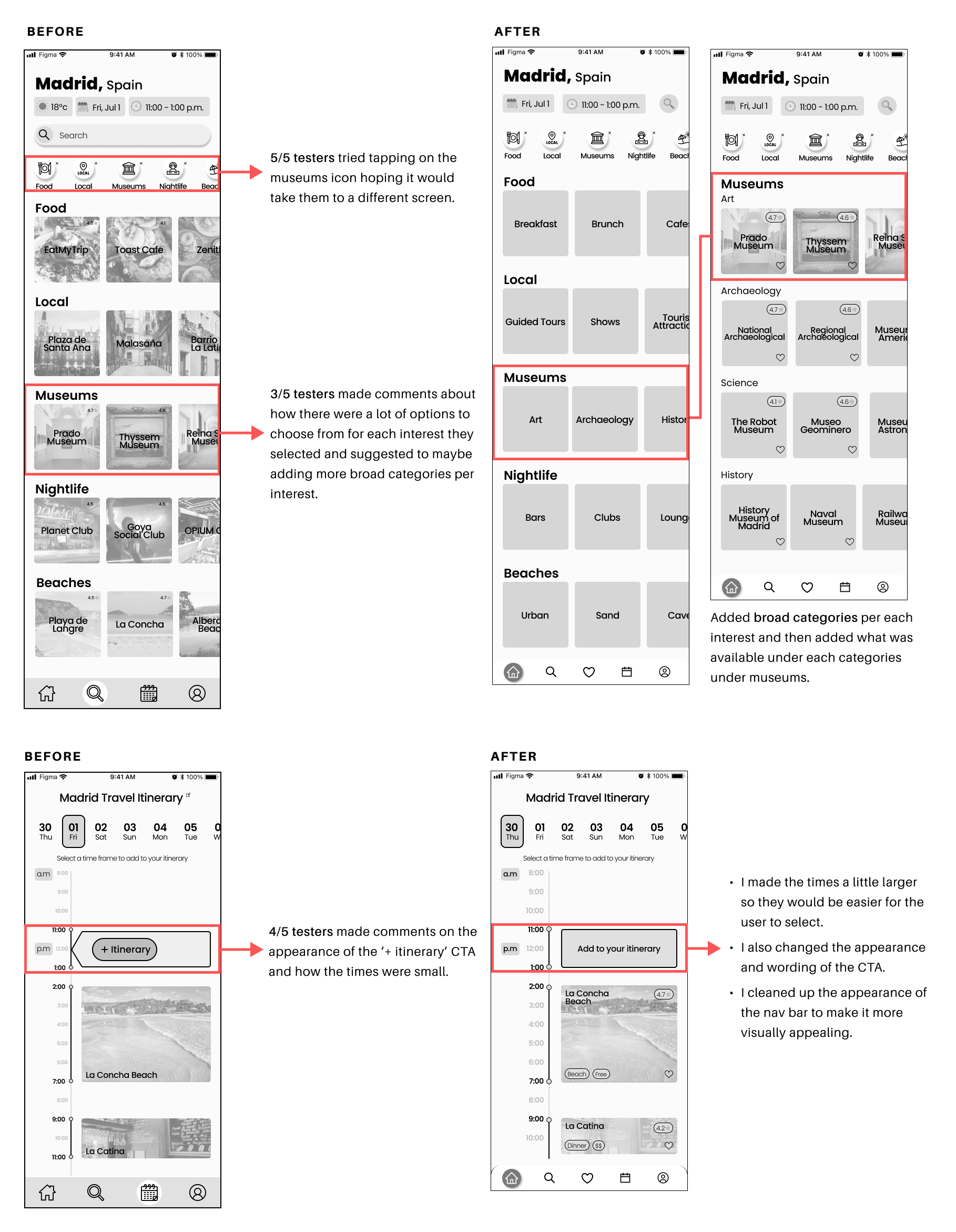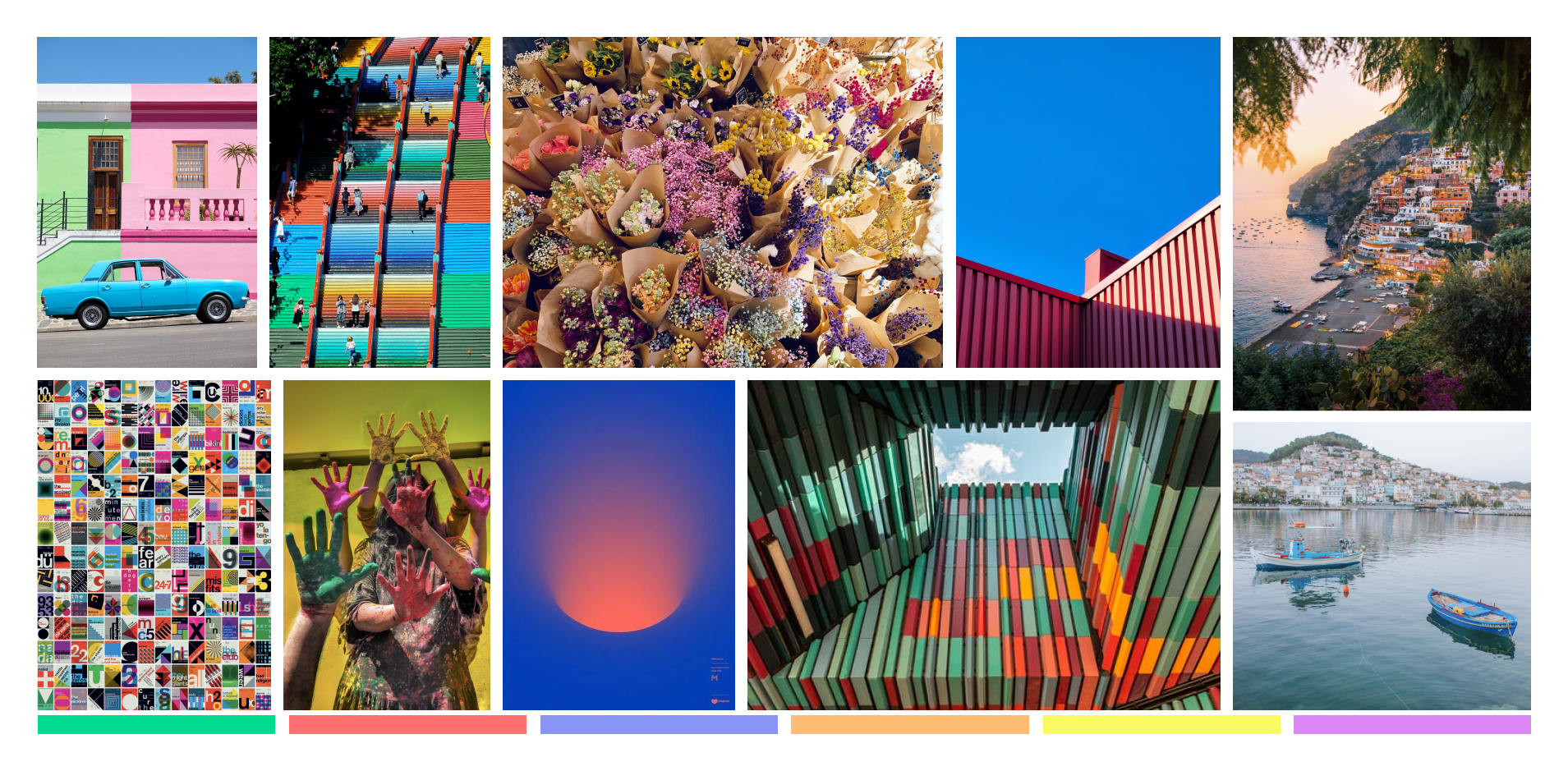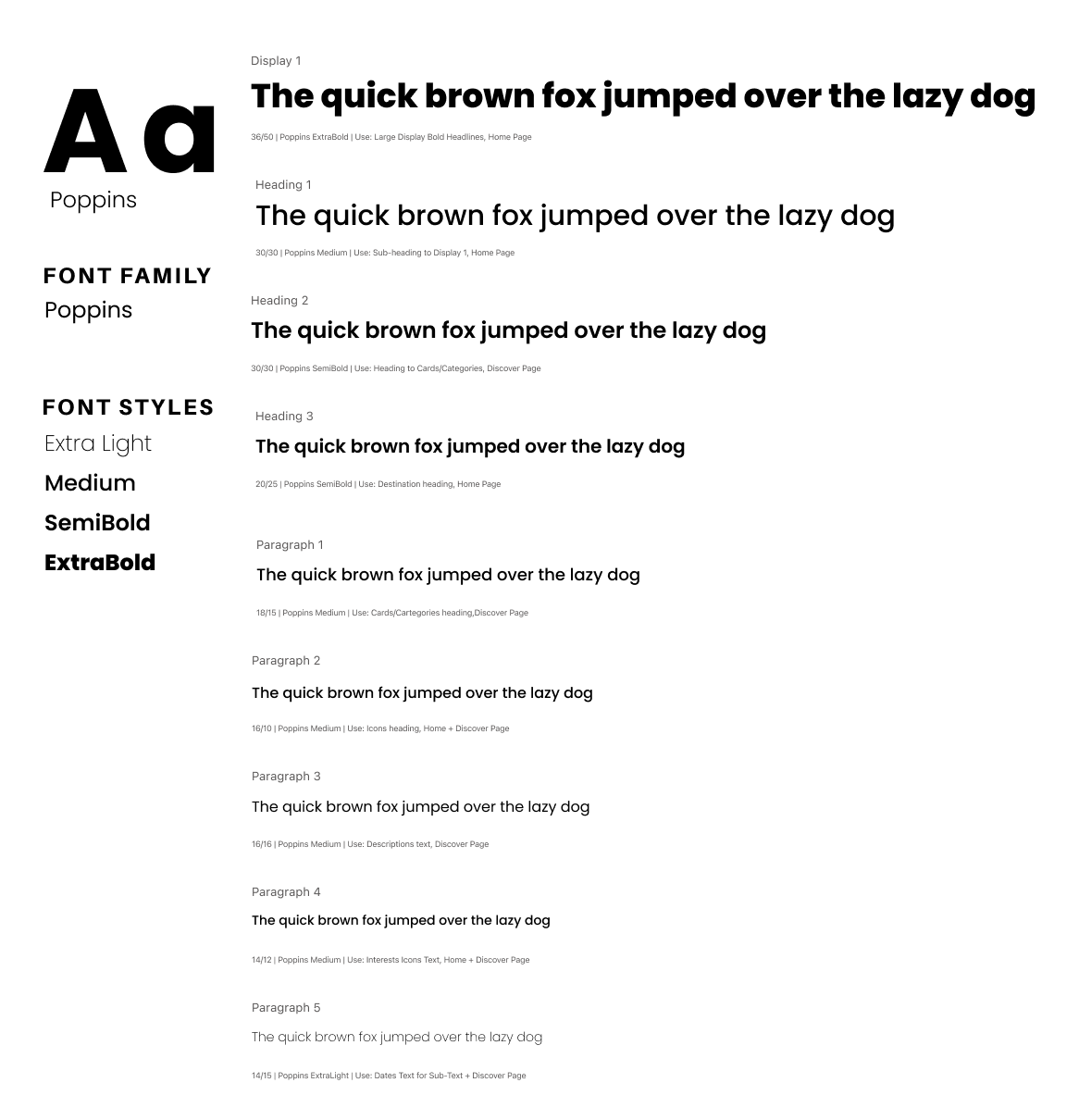Plan my Trip
Creating a stress-free, personalized travel-planning app for authentic itineraries.
Brainstation, Jan - Sept 2022
My Design Process
〰️
My Design Process 〰️
1
2
3
4
5
6
the design challenge
1
INTRODUCTION
With travel resuming post-pandemic, you decide it’s time for a much-needed vacation. But as you browse various platforms to plan your trip, the overwhelming number of options leaves you feeling stressed and time-pressed.
To simplify this process, I designed a mobile app that helps travelers efficiently plan trips by curating personalized itineraries based on individual interests.
ROLE
UX Designer
CONSTRAINTS
Designed for a mobile application, though it may also work well on desktop.
Focused on one main task flow to ensure clarity and depth.
discovering the problem
2
SECONDARY RESEARCH
International travel increasingly focuses on cultural immersion. Planning a trip is often stressful, with top challenges being financial concerns, packing, arranging travel, and itinerary planning. Travellers desire authentic experiences, often seeking local insights over tourist attractions. However, 89% of travellers report feeling overwhelmed by the volume of information presented during trip planning.
PROBLEM
Travellers prefer immersing themselves in local culture, enjoying their trips more when engaging with local elements. In a survey of 1,400 travelers, 89% found trip planning the most stressful due to excessive information. Current booking services often overwhelm users with general interests and top attractions that may not be helpful.
ASSUMPTIONS
Before speaking with users, I made several assumptions regarding their needs:
User needs: Travellers need to plan their trips effectively to immerse themselves in local culture. This can be achieved by filtering information based on their interests.
Target audience: Individuals aged 20 to 45 who have traveled before, enjoy traveling, and seek to absorb as much culture as possible during their trips.
Key value proposition: The primary benefit of my product is the ease of trip planning, complemented by additional features such as discovering local gems, accessing schedules, viewing photos, and reading genuine reviews.
HYPOTHESIS
Based on my assumptions about users, I believe anyone who has traveled would highly recommend it. Travel provides a valuable break from everyday stress. While most travellers enjoy planning their trips, constraints like time and money often make the process stressful. I will know this is true when at least 75% of interview participants share similar experiences regarding trip planning.
IDENTIFYING THE PROBLEM
After conducting secondary research and forming a hypothesis about my users, the opportunity I wanted to focus on was alleviating the stress of trip planning by making it easier for them to discover local sights and culture.
After initial research, the challenge was clarified as follows:
How might we reduce the stress of planning authentic travel experiences based on travelers' interests, allowing them to fully immerse themselves in local sights and culture?
research plan
3
Considering my assumptions, my next steps were to interview people to validate my hypothesis. Research is being conducted to better understand travelers' pain points related to trip planning and to explore ways to alleviate this stress.
PRIMARY RESEARCH
THE GOAL
Discovering new cultures is increasingly the primary reason for booking international trips, making effective planning essential. The greatest travel stress during this stage is related to financial concerns, packing, travel arrangements, and itinerary development.
I aim to learn more about travelLers' motivations and behavioUrs to improve their planning experience. Understanding the constraints they face, particularly regarding time and money, is also important.
My goal is to enhance the travel planning process, allowing travellers to enjoy their trips upon arrival rather than scrambling to organize activities. Vacations should be stress-free, as many travellers seek a break from their everyday lives.
RESEARCH METHODS
I first conducted secondary research to confirm that there was a problem worth investigating. After completing the secondary research and creating a problem space, I will conduct primary research through interviews.
I compiled an interview script; however, considering the time frame within which the interviews needed to be conducted, I opted to format the interviews as a survey since not all my interviewees were available for virtual interviews.
INTERVIEW PARTICIPANT CRITERIA
The following criteria must be met by my interviewees for the interviews to take place:
Residency: Participants must currently reside in North America, ensuring relevance to the target demographic.
Travel Experience: Interviewees should have traveled outside of their home country at least twice in their lifetime, whether during the pre-pandemic period or the pandemic itself. This experience is essential to gather diverse perspectives on travel.
Passion for Travel: Participants must have a genuine love for travel, as this enthusiasm will contribute valuable insights into their experiences and motivations.
SYNTHESIZING DATA
KEY FINDINGS + THEMES
After interviewing all my participants, I organized their pain points, motivations, and behaviours based on the questions I asked. These questions provided me with a clearer understanding of how they approach trip planning, whether they find it stressful, and what could be done to alleviate that stress.
Based on my interviews, I organized my key findings into seven recurring themes:
Efficiency: Travellers desire efficiency when planning trips, whether it’s knowing what to pack for a specific destination, creating a to-do list, or having an agenda to stay organized. They appreciate having a platform to view a daily schedule, especially if multiple activities are planned.
Experience: Travellers love to explore new places and look forward to creating unforgettable experiences with friends. Many seek the best travel destinations while also wanting to experience life as a local.
Transparency: It is crucial for travellers to see authentic reviews and photos of their destinations on the platforms they use for research. This is why Instagram is heavily utilized, as it allows users to view pictures of locations. Additionally, travellers expressed concerns about COVID-19 and travel restrictions, noting that the information available was often inconsistent.
Culture: Travellers enjoy visiting new places for fresh perspectives and the opportunity to immerse themselves in local culture. They are eager to try new foods, learn about the local people, and live like locals during their travels.
Money: Travellers find it stressful to stick to a budget for their desired activities, as costs can quickly add up with flights, activities, food, and accommodations. They expressed frustration over the lack of transparency regarding pricing for many activities.
Time: Planning a trip can be very time-consuming for travellers, as they often use multiple platforms to gather information. Their primary motivation for traveling is to relax and take a break from their everyday lives.
Safety: Travellers prefer to travel with friends or groups, not only to create memories but also because safety is their biggest concern. They want to know how safe their chosen destination is before traveling.
RE-IDENTIFYING THE OPPORTUNITY
After conducting my interviews and sorting through all the pain points of my interviewees, I found that all travellers enjoyed planning their trips and did not find it stressful. Instead, they found it to be more time-consuming and wished there were a more efficient way to plan their trips.
After conducting interviews and gaining deeper insights into the real problems people were experiencing, I identified a new opportunity as follows:
How might we help travellers efficiently plan for an upcoming trip to create authentic travel experiences?
PERSONA
After synthesizing the pain points, motivations, and behaviors of my interviewees, I created a persona named Nazanin, who embodies their collective goals and frustrations.
EXPERIENCE MAP
To visibly identify and understand my persona's needs and pain points, I created an experience map.
developing a solution
4
TASK SELECTION PROCESS
USER STORIES + EPICS
My experience map highlights two areas of opportunity that reflect Nazanin's journey, particularly her feelings of being overwhelmed while searching for trip information. I wrote several user stories and organized them into five epics.
CORE EPIC:
Personalization
CORE TASKS:
As a traveler, I want to curate a custom travel itinerary so that my travel plans align with my personal interests.
As a traveler, I want to add to my itinerary so that I can customize my travel experience to meet my needs.
TASK FLOW
After identifying my core tasks, I developed a task flow to illustrate how Nazanin would plan a trip and create an itinerary based on her travel interests.
UI INSPIRATIONS BOARD
Once I decided on the core task to focus on, I researched various apps addressing similar problems. I drew inspiration from different components used in those apps that I believed could help me solve my challenge.
SKETCHES
After capturing several components for inspiration, I began sketching ideas for the user experience I envisioned to address the chosen task flow. I realize now that I should have explored additional concepts for what my solution could look like.
PROTOTYPE VERSION 1
LO-FI WIREFRAMES
After ideating some sketches, I created my first round of low-fidelity wireframes, which were used for the initial round of usability testing.
USABILITY TEST FINDINGS (ROUND 1)
After creating my first version of the low-fidelity wireframes, I conducted my initial round of usability tests. I had five users complete a task that required them to navigate through all the screens to evaluate the flow. Additionally, I asked some questions after the test to gather feedback on what they found difficult and what they would have liked to see more of.
THE TASK
“Imagine you’ve booked a ticket to Madrid, Spain, from June 30th to July 15th. You’re interested in exploring food, beaches, museums, and nightlife during your visit. The Prado Museum has peaked your interest, and you want to add it to your itinerary. How might you go about doing this?”
DESIGN MATRIX PRIORITIZATION (ROUND 1)
Based on feedback from my first round of usability tests, I identified users' pain points and additional features they desired. I organized these insights into a design prioritization matrix, focusing on the 'high impact/low effort' quadrant due to time constraints.
NOTABLE CHANGES
Based on my design matrix, I highlighted key changes made in response to the feedback I received. Not all changes are included, and not everything was revised; as mentioned earlier, I focused on adjustments in the 'high impact/low effort' quadrant.
PROTOTYPE VERSION 2
LO-FI WIREFRAMES
After my first round of usability tests, I made design changes to the prototype and conducted a second round of five usability tests.
USABILITY TEST FINDINGS (ROUND 2)
After creating the second version of my low-fidelity wireframes, I conducted a second round of usability tests with another five users. They completed a refined task that required them to navigate through all the screens again to evaluate the flow. I also asked the same questions afterward to gather feedback on what they found difficult and what they would have liked to see more of.
THE REVISED TASK
“Imagine you’ve already booked a ticket to Madrid, Spain, from June 30th to July 15th. Your selected interests are food, beaches, museums, and nightlife. You navigate to your itinerary page, select 11 a.m. to 1 p.m., and see The Prado Museum on your discovery page, which you want to add to your itinerary. How might you go about doing this?”
DESIGN MATRIX PRIORITIZATION (ROUND 2)
Based on feedback from my second round of usability tests, I organized the identified pain points and additional user-desired features into a design prioritization matrix, similar to my first test. Due to time constraints, I focused solely on items in the 'high impact/low effort' quadrant.
NOTABLE CHANGES
Based on my design matrix, I highlighted key changes made in response to the feedback I received. Not all changes are displayed, and not everything was revised; as mentioned earlier, I focused on adjustments in the 'high impact/low effort' quadrant.
FINAL PROTOTYPE
From my second round of usability tests, I developed the final prototype. I focused on enhancing the UI to make it visually appealing, even though it remains in grayscale. Once I begin working on branding, I will create the high-fidelity prototype.
creating a visual identity
5
Before developing the high-fidelity prototype, I want to consider the visual identity of the brand. I thought of several adjectives that embody the brand:
Excitement
Spontaneity
Fun
Culture
Vibrancy
Energy
Relaxation
Happiness
MOODBOARD
After brainstorming adjectives, I gathered images for my mood board that reflect those qualities. These visuals will help convey the brand's identity and evoke the feelings of excitement, spontaneity, fun, culture, vibrancy, energy, relaxation, and happiness.
TYPOGRAPHY
For the typography, I chose the Poppins font family. It’s a fun and modern typeface that offers a variety of styles to explore, allowing for versatility and creativity in the design.
COLOURS
I selected colours from the mood board and organized them into categories: primary, secondary, tertiary, and neutral colours. This classification will help create a cohesive and harmonious colour palette for the brand. The brand's primary colour, represented by the hex code #01DB8F, is a vibrant teal that conveys a sense of energy and freshness, making it an excellent choice for the brand's identity.
LOGO DEVELOPMENT
I created sketches to explore the design of the wordmark and elements for the logo. I ultimately chose the name 'Plan My Trip' to reflect the app's purpose of helping users organize their travel plans.
The wordmark features a traveler holding an ‘itinerary,’ which I believe would make an effective app icon, emphasizing the app’s focus on trip planning.
ICONOGRAPHY
I opted for minimalistic icons that incorporate some of the tertiary colours from my selected palette. This choice not only enhances the overall design but also adds visual interest without overwhelming the user interface. By maintaining a clean and modern aesthetic, the icons effectively complement the app's vibrant colour scheme, making navigation intuitive and enjoyable for users.
FINAL PROTOTYPE
After carefully considering the direction for the visual identity, I have finalized the design elements that reflect the essence of the app. You can view the completed prototype here, which showcases how these elements come together to create an engaging and user-friendly experience.
conclusion
6
NEXT STEPS
Since this project focused on a single task flow, it would be beneficial to expand it to include several task flows and create a more cohesive app. I would also like to develop a desktop version of this mobile app, as I believe it would provide more real estate for users and might function better on desktop than on mobile. Additionally, I want to enable friends to collaborate within the app and create itineraries together.
FUTURE THINKING: THE TAROT CARDS OF TECH
As part of this project, we were required to ‘think outside the box’ and consider factors we hadn't initially taken into account while creating our app. For this exercise, I chose to focus on 'The Forgotten' and 'The BFFs.
THE FORGOTTEN: When you picture your user base, who is excluded? If they used your product, what would their experience be like?
My user base primarily consists of individuals aged 18 to 45—essentially anyone who can use technology. During this exercise, I realized that I had favored able-bodied individuals and had not adequately considered users with disabilities. Disabilities users may experience on-and-off the screen.
THE BFFs: If two friends use your product, how could it enhance or detract from their relationship?
I believe my product could enhance relationships among groups of travelers (2 or more) by allowing them to collaborate and add activities to a shared itinerary. However, on the flip side, it could also create challenges if travelers have differing interests; for example, if you’re traveling with a friend and you don’t share the same preferences for activities.
KEY LEARNINGS
Throughout this project, I gained several important insights that will guide my future work:
Be Open to Feedback: Embrace constructive criticism as a way to improve rather than taking it personally.
Accept Imperfection: Understand that early versions don’t need to be perfect; use them as a foundation for growth.
Prioritize the User: Keep the user’s needs and experiences central to all design decisions.
Ask Questions: Inquire and engage to gain deeper insights and clarify uncertainties.
Test and Iterate: Regularly test your designs and iterate based on feedback to enhance usability and effectiveness.
These key learnings will not only improve my current project but also shape my approach to future endeavours, ultimately leading to better designs and user experiences.






